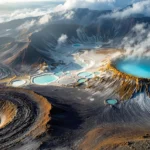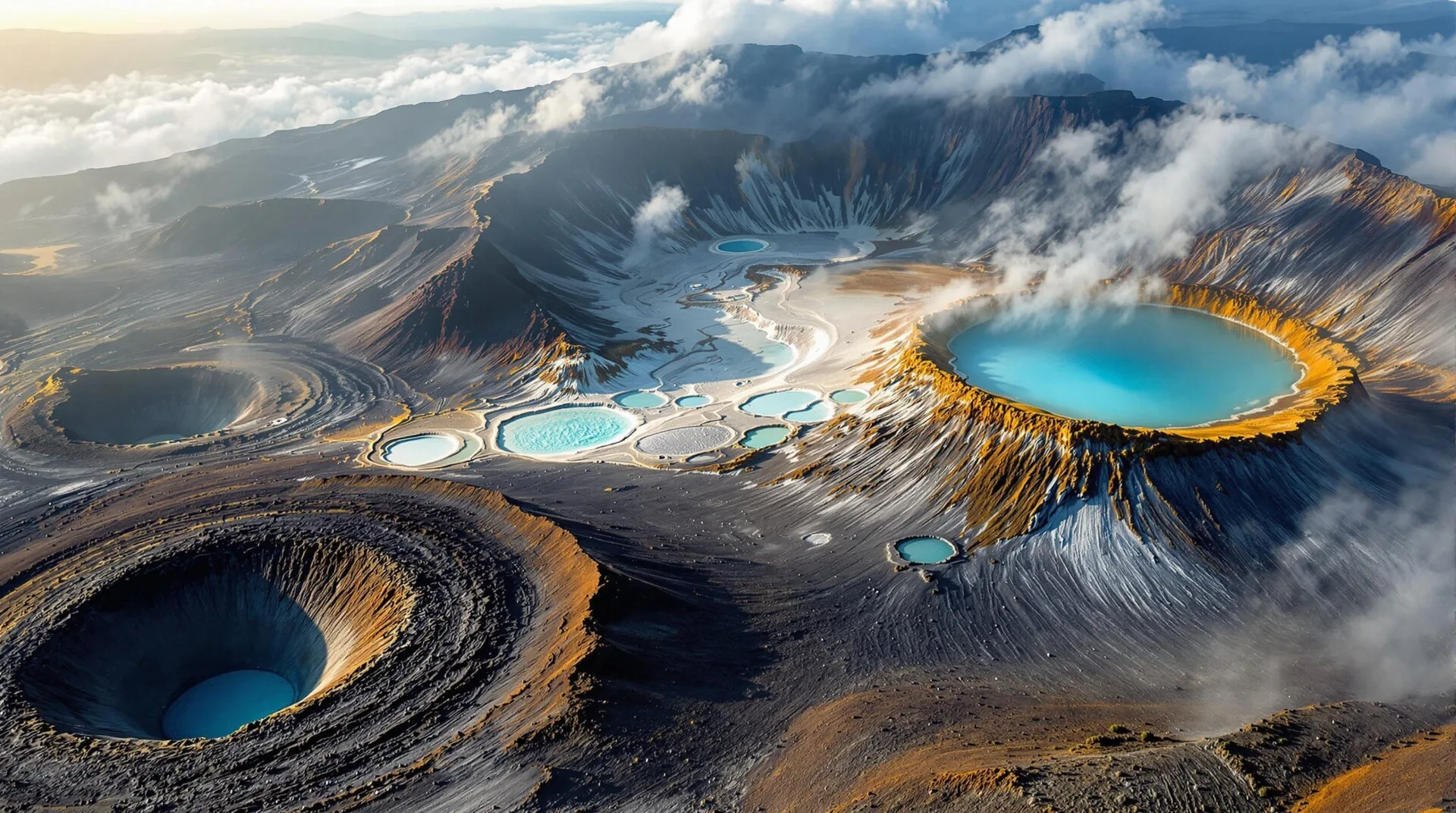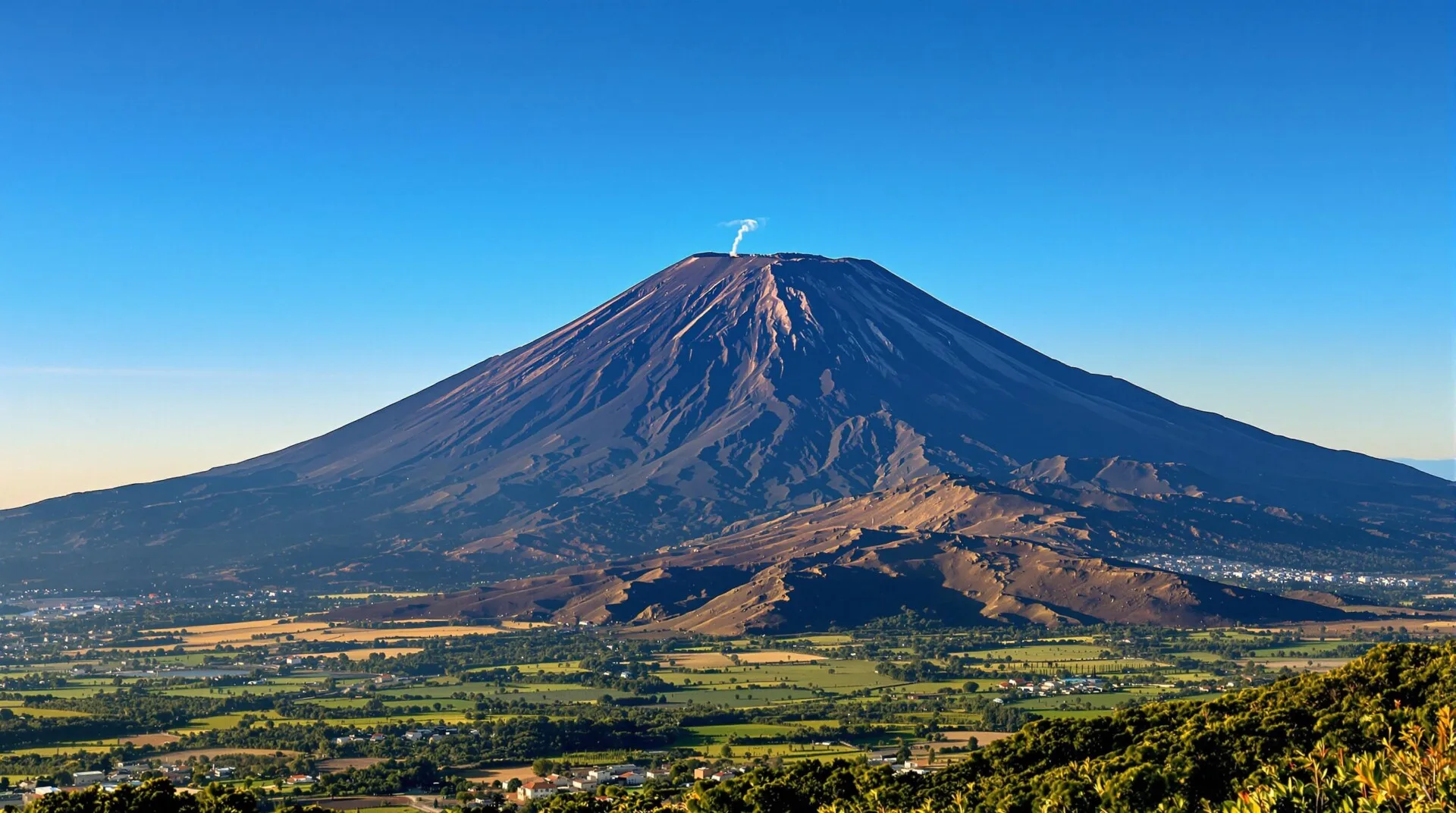Have you ever wondered how a volcano is formed? This article explores the fascinating journey from molten rock deep in the Earth to spectacular eruptions on the surface. We will cover the science of magma, tectonic forces, famous volcanic events and modern monitoring techniques, all with a focus on the Earth's dynamic processes and their impact.
1. Understanding the Fundamentals of Volcanic Formation
Volcanoes are more than just mountains with fire; their creation is a complex process. A volcano is formed when molten rock (magma) rises to the surface through cracks in the earth's crust. This is driven by powerful forces, which include:
- Tectonic plate movement: The Earth's surface is like a giant jigsaw puzzle, and the moving pieces create spaces for magma to escape.
- Pressure changes: Pressure variations in the deep Earth play a crucial role in rock melting.
DID YOU KNOW THAT...? 💡 The word "volcano" comes from the Roman god of fire, Vulcan!
This article explores the origin of volcanoes, starting with the creation of magma in the Earth's mantle. This process may sound technical, but it is understandable with clear examples. We will examine three key processes that generate magma, each contributing to different types of volcanoes, from explosive giants to slow-growing shield volcanoes.
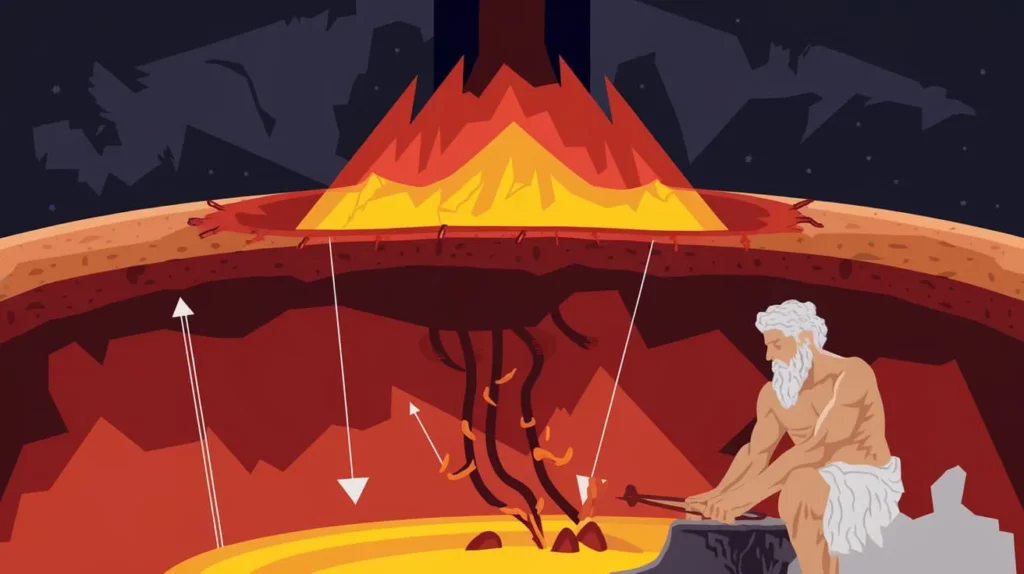
2. The Magma Cookbook: ♨️ Decompression, Flux Melting and Heat Transfer Melting.
Creating magma is like following a recipe. The Earth uses three main "techniques":
2.1 Decompression Fusion
📌 Analogy: Imagine a pressure cooker suddenly releasing its pressure.
In the depths of the Earth, the mantle is under immense pressure. In the divergent plate boundaries (where the plates separate), this pressure decreases significantly. This sudden decrease melts the mantle rock, forming basaltic magma.
- Location: It is commonly found in oceanic ridges, creating submarine volcanoes.
- Result: Relatively fluid magma, often leading to less explosive eruptions.
2.2 Flow Fusion
📌 Analogy: Adding a secret ingredient (water!) to a recipe.
In the subduction zones (where one plate sinks below another), water is released from the descending plate. This water acts as a flowThe melting point of the upper rock decreases.
- Location: Common in areas such as the Andes Mountains.
- Result: Thicker magma, richer in silica, often leads to eruptions. explosive.
2.3 Heat Transfer Fusion
📌 Analogy: A giant blowtorch heating the earth's crust.
This occurs in the hot pointswhere columns of extremely hot mantle rock ascend and melt the overlying rock.
- Location: Classic example: Hawaii.
- Result: Very fluid magma, creating shield volcanoes wide and gently sloping.
CURIOUS FACT: 🤔 The Hawaiian Islands are formed entirely by volcanic activity from a hot spot!
These three processes, as ingredients, combine to create different types of volcanoes around the world. Each method produces magma with unique characteristics, leading to the diverse volcanic behavior we observe.
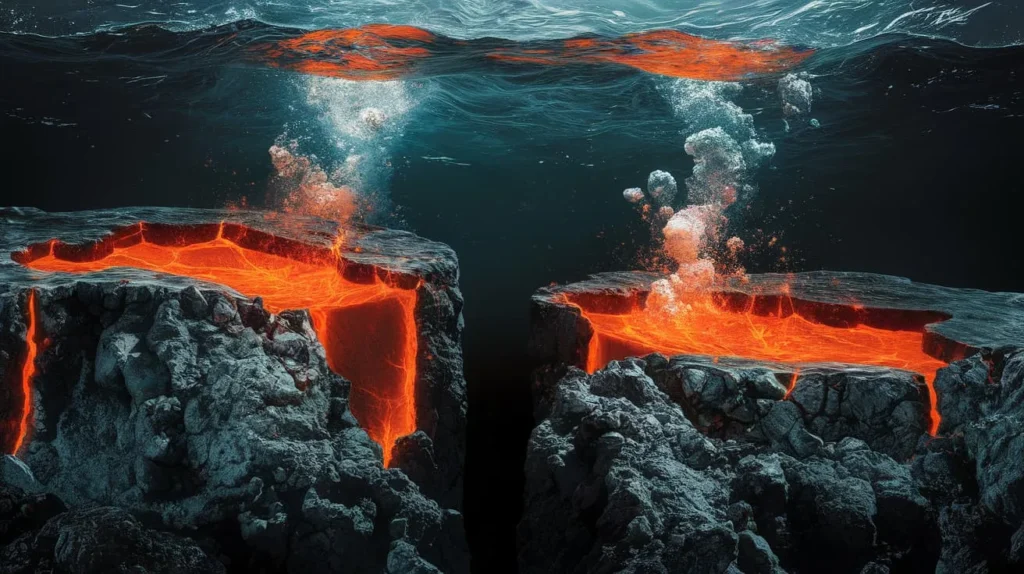
3. Tectonic Forces: 🌍 The Ever-Moving Puzzle of the Earth.
The surface of the Earth is made up of enormous tectonic plates that move slowly (about the speed at which fingernails grow!). This movement creates tension, opens pathways and forces the magma to rise to the surface.
3.1 Divergent Boundaries
- The plates are separate.
- Magma rises to fill the space, creating new crust.
- Example: Mid-Atlantic Ridge.
3.2 Convergent Limits
- The plates collide; one is subduce (sinks) under the other.
- Water released from the subducted plate triggers flow melting.
- Example: The "Ring of Fire" around the Pacific Ocean.
The interaction of these plates is crucial in creating many of the world's volcanoes. Some of the most powerful eruptions occur at these boundaries.
3.3 Transforming Limits
- Plates slide next to each other
- Can cause intense earthquakes
- Example: San Andreas Fault

Comparative Table: Magma Formation and Tectonic Setting
| Merger Process | Tectonic Environment | Magma Type | Eruption Style | Example of Location |
|---|---|---|---|---|
| Decompression Fusion | Divergent Boundaries | Basaltic | Effective (soft) | Mid-Atlantic Ridge |
| Flow Fusion | Convergent Limits | Andesitic/Rhiolitic | Explosive | Andes, Japan |
| Heat Transfer Fusion | Hot Spots | Basaltic | Effective (soft) | Hawaiian Islands |
4. Iconic Volcano Stories: 🌋 From Krakatoa to Hawaii
Volcanoes tell stories of Earth's history. Some are known for their explosive power, others for their gradual shaping of the landscape.
- Krakatoa (1883): A catastrophic eruption, one of the most violent on record. The explosion sent ash clouds into the atmosphere, affecting the global climate.
The sound of Krakatoa's eruption was heard thousands of miles away! 🔊
- Mount St. Helens (1980): A dramatic example of an explosive eruption in the Pacific Northwest. The eruption was caused by thick, volatile magma.
- Hawaiian Volcanoes: A chain of shield volcanoes built by the slow and steady flow of basaltic lava. A testament to the power of gradual volcanic activity.
- Devil's Tower (Wyoming): It is not a typical volcano, but the remnant of an ancient volcanic neck. The surrounding rock eroded away, leaving the hardened magma core.
These examples demonstrate the variety and power of volcanic activity. They show how volcanoes are both destructive forces and landscape creators.
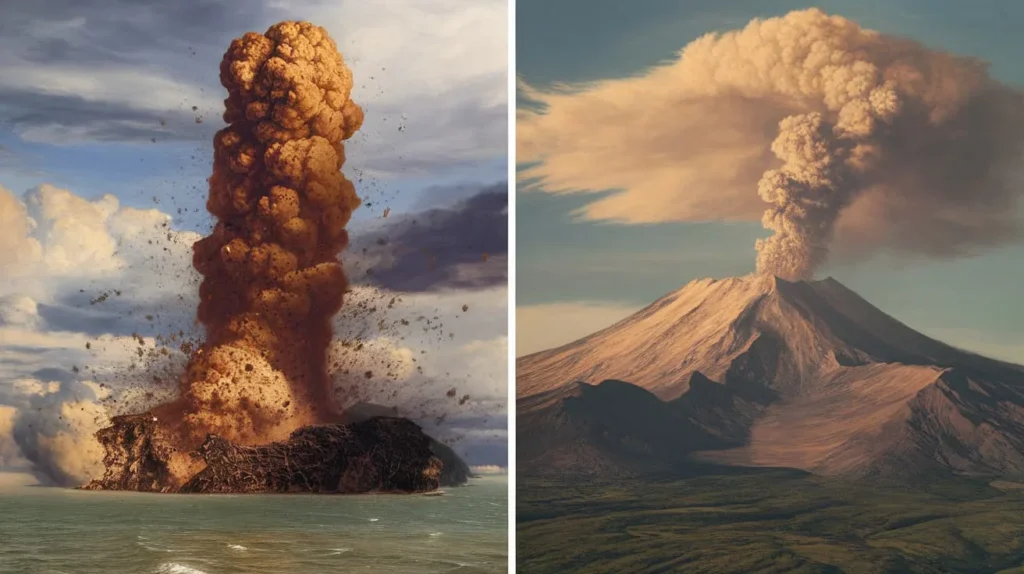
5. Volcano Monitoring: 🔭 The Science of Fire Watching
Scientists monitor volcanoes to protect communities. It's like a weather forecast, but for volcanic activity. Key monitoring techniques include:
- Soil Deformation Sensors: They measure subtle changes in the shape of the ground (like a balloon inflating) as magma rises. Tools include GPS and inclinometers.
- Seismometers: Tremors and earthquakes caused by magma movement are detected. Increased seismic activity is a warning sign.
- Gas Sensors: They analyze volcanic gases (such as sulfur dioxide and carbon dioxide). Changes in gas composition may indicate an impending eruption. Spectrometers are used for this analysis.
- Satellite Remote Sensing: Satellites can track thermal anomalies (hot spots), gas emissions and ground deformation over large areas. This is particularly useful for remote or inaccessible volcanoes.
- Infrasound monitoring: Some volcanoes emit low-frequency sound waves (infrasound) that are inaudible to humans. These sound waves can travel long distances and provide information about the dynamics of the eruption.
CONNECTION TO SUSTAINABILITY: 🌱 Volcano monitoring is crucial to protect human lives and infrastructure. Early warnings enable evacuations and mitigation efforts, reducing the impact of eruptions. Geothermal energy, a renewable resource, is often located near volcanic areas.
By carefully observing these signals, volcanologists can often predict when an eruption might occur, giving communities time to prepare.
6. Conclusion: Key Points on Volcano Formation
Understanding how a volcano forms is like putting together a complex puzzle. We have learned:
- The formation of volcanoes begins deep within the Earth with the creation of magma through the decompression melting, flow melting, and heat transfer melting.
- The movement of tectonic plates guides the magma to the surface.
- Volcanoes exhibit a wide range of behaviors, from explosive eruptions to gentle lava flows.
- Modern monitoring techniques help us to coexist safely with these powerful natural forces.
- Volcanoes are formed in Hot Spots, Divergent Plate Boundaries y Convergent Plate Boundaries.
Volcanoes are not just destruction; they are creative forces that build new lands, influence the climate, and remind us of the dynamic nature of our planet. Learning about volcanoes deepens our appreciation for the natural world - stay curious and keep exploring!

